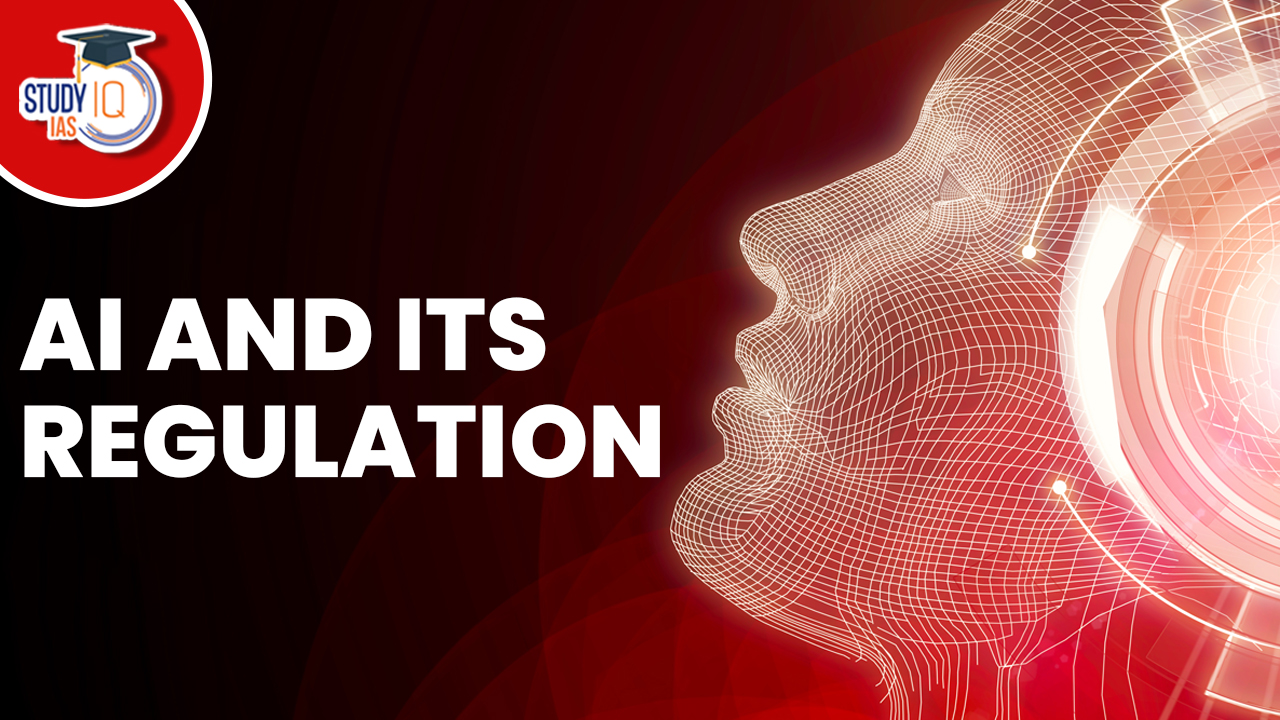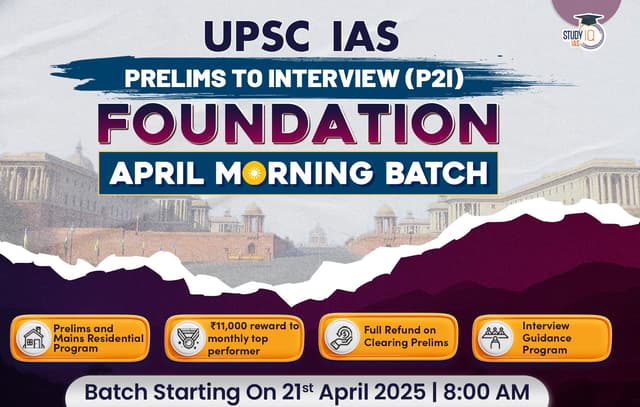Table of Contents
Context: The governance and regulation of Artificial Intelligence (AI) have garnered significant global attention over the past year.
What is Artificial Intelligence (AI)?
- Artificial Intelligence (AI) is the branch of computer science concerned with developing machines that can complete tasks that typically require human intelligence.
- The goals of artificial intelligence include computer-enhanced learning, reasoning, and perception.
- Artificial intelligence is based on the principle that human intelligence can be defined in a way that a machine can easily mimic it and execute tasks, from the simplest to those that are even more complex.
India’s Approach to AI Regulation
India has opted for a soft-regulatory, mission-driven model rather than a hard legislative or enforcement-based approach. Unlike some countries that have enacted AI-specific laws or national AI strategies with implementation roadmaps, India’s approach is flexible, adaptive, and evolving.
Key Elements of India’s AI Approach
- No dedicated AI regulation or law: India lacks an AI-specific legal framework.
- No formally endorsed National AI Strategy: NITI Aayog’s 2018 strategy document remains only a suggestive blueprint.
- Mission-mode focus through IndiaAI: Emphasis is on fostering innovation and the AI ecosystem through the IndiaAI mission, backed by 7 pillars like compute infrastructure, datasets, research, and skilling.
- Advisory frameworks under development: Expert groups are working on governance frameworks, but adoption remains uncertain.
- Leverage of existing digital laws: India may build AI regulation on the backbone of the Digital Personal Data Protection (DPDP) Act, 2023.
| IndiaAI Mission |
|
Merits of India’s Current Approach
Flexibility & Adaptability
- No rigid law enables India to respond to rapidly evolving technologies and global AI geopolitics.
- Allows policy experimentation and space for stakeholder consultations.
Focus on Ecosystem Development
- India is prioritising building AI capacity, infrastructure, skills, datasets, and public-private partnerships.
- Early-stage adoption requires enabling tools and not overregulation.
Learning from Global Models
- India can observe regulatory outcomes in other countries (like the EU’s AI Act) before acting.
- Provides time to create indigenous frameworks sensitive to local socio-economic realities.
Limitations and Gaps in India’s AI Regulation
- Lack of Coherent Vision and Roadmap: Absence of an official AI policy means unclear vision, no fixed milestones, and weak accountability.
- No Legal Guardrails: Implementation of AI systems remains largely voluntary and opaque.
- This creates the risk of privacy breaches, biased algorithms, and a lack of redressal mechanisms.
- Public Unawareness and Lack of Debate: Citizens are largely unaware of where and how AI is being used — in banking, health, education, or welfare delivery.
- Civic discourse on ethics, labour disruption, misinformation, and model safety is limited.
- Risks of Leadership Dependency: Without institutionalised regulation, AI adoption risks becoming personality- or ministry-driven, lacking continuity.
- Reactive, Not Proactive: India has responded after harm, e.g., AI-generated content causing social unrest, instead of anticipating and preparing.
Global Models India Can Learn From
| Country/Region | Model | Key Feature |
| EU | Centralized, binding | EU AI Act – risk-based, with clear bans and regulations. |
| China | Use-case specific | Focused on deep synthesis and generative AI. |
| USA | Decentralized | Sector-specific regulations, market-led innovation. |
| Canada, Korea, Peru | Draft laws introduced | Emphasis on AI transparency and accountability. |
| 85+ countries incl. AU | National AI strategies | Define vision, roadmaps, and ethical guardrails. |
Way Forward for India
- Draft and Publish a National AI Policy: Should outline:
- Vision for AI in India
- Priority sectors (health, agriculture, education, governance)
- Capacity-building strategy
- Ethical and legal frameworks
- Public awareness, participation, and grievance redress
- Pilot Regulatory Mechanisms: Use regulatory sandboxes in key sectors (e.g., Fintech, HealthTech) to test AI systems in real-world conditions.
- Strengthen Citizen-Centric Safeguards: Mandate algorithmic transparency, impact assessments, and opt-out mechanisms in public services.
- Integrate with DPDP Act, 2023: Use India’s centralised data protection law as a foundation for cross-sector AI governance.
- Create an Independent AI Oversight Body: Like a “National AI Commission” to audit high-risk models, set standards, and ensure responsible AI deployment.
Conclusion
India’s current AI approach is innovation-centric and adaptive, but it lacks regulatory clarity and citizen protection mechanisms. As AI rapidly becomes embedded in socio-economic systems, India needs a clear, inclusive, and enforceable framework. A balanced strategy — combining AI policy, legal guardrails, and ethical principles — is essential to ensure AI in India is not only cutting-edge but also safe, inclusive, and aligned with constitutional values.


 India’s First Full-Stack Quantum Compu...
India’s First Full-Stack Quantum Compu...
 What is Tensor Processing Unit (TPU)?
What is Tensor Processing Unit (TPU)?
 Tuberculosis (TB), Symptoms, Causes and ...
Tuberculosis (TB), Symptoms, Causes and ...





















